If you are diagnosed with periodontal disease, periodontal surgery may be recommended. Periodontal surgery is necessary when it has been determined that the tissue around your teeth is unhealthy and cannot be repaired with non-surgical treatment.
Dr. Adams is highly skilled at a variety of surgical procedures to help restore and maintain optimum dental health. These short descriptions are here to assist you in gaining a brief understanding of these procedures and the role they play in your well-being. If there is any additional information you would like on any of the surgical procedures, please don’t hesitate to ask!
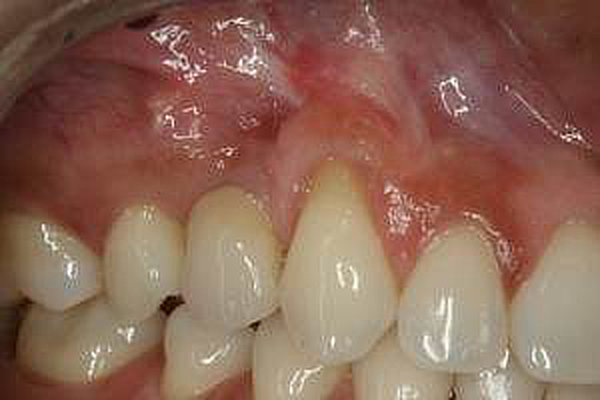
Gum recession occurs when the gum becomes thin or weak and beings to pull away from the tooth. Gum recession can be unsightly and can weaken the stability of the tooth. Gum grafting can help to restore your healthy gums. The outcome of this procedure can be two-fold, augmentation of tissue to prevent further movement of tissue, as well as root coverage to cover exposed roots.
What to Expect
How Well Does It Work
What to Expect After Treatment
With gum grafting, discomfort is a possibility. This may be dependent on the donor area involved with the surgical procedure. These procedures transplant tissue from one area of the mouth (usually the palate) to another area. In some cases other donor tissue, not from the palate, can be used with greatly enhance the comfort of the procedure.
Sedative Options
Risks
As with any surgery, infection and swelling is possible post operatively.
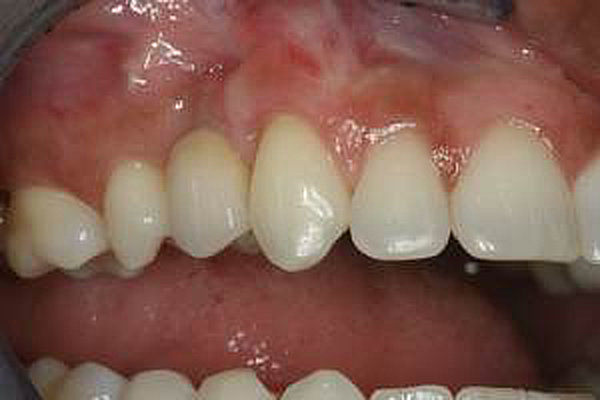
Altered Eruption AKA the “Gummy Smile” Procedure. Patients sometimes have excessive gum covering the teeth, which leads to the appearance that the teeth are too short.
This condition is often referred to as a “gummy smile”. As teeth erupt, the tissue usually pulls back to the level where the enamel and tooth root meet. In some cases the tissue stays covering the enamel too much, which leads to the short appearance of the teeth. With this procedure, Clearwater Periodontics and Implant Dentistry is able to reposition the tissue to create a more pleasing tooth length and esthetic outcome.
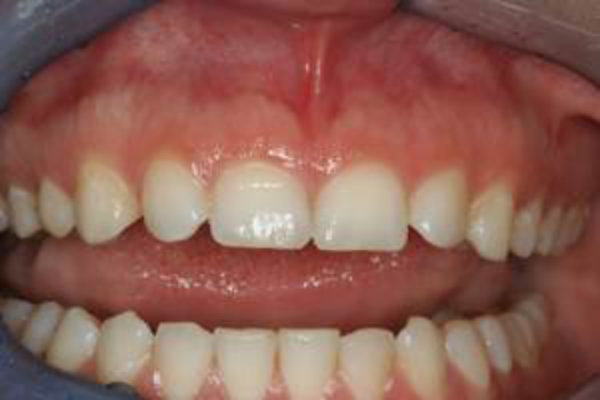
Results

What to Expect
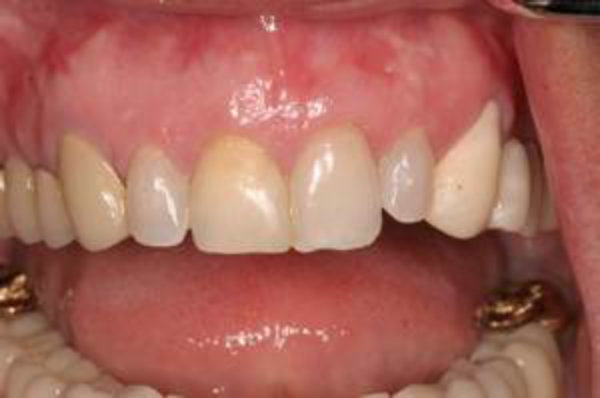
Esthetic Crown Lengthening & Restorative Dentistry
When decay occurs below the gum line, it may be necessary to remove a small amount of bone and gum tissue to allow for access to restore your tooth. Your primary dentist may ask Dr. Adams for this procedure before he or she makes a new crown for your tooth.
If the front teeth are too short or of uneven length, esthetic crown lengthening might be indicated. Reshaping the gum and supporting tissues will allow your general dentist adequate room to place a quality final restoration.
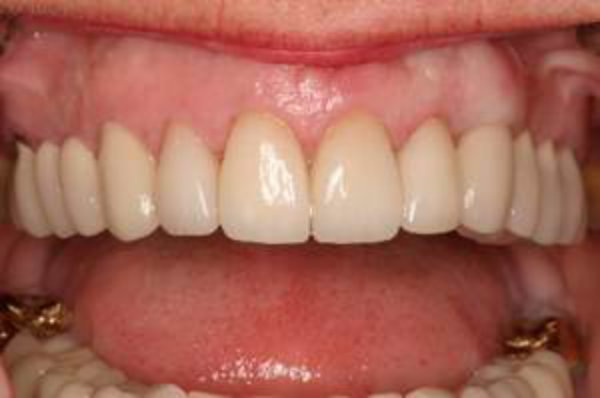
Esthetic Crown Lengthening & Cosmetic Treatment
Esthetic Crown lengthening is used to correct what’s commonly referred to as a “gummy smile.” A gummy smile is apparent when the gum line appears to be creeping down over the teeth, making them appear shorter.
To correct a gummy smile, it is necessary to remove excess gum tissue, therefore allowing more of the natural tooth surface to appear. This procedure creates a more balanced smile, and for many patients, increases confidence.
A frenectomy (also known as a frenulectomy or frenotomy) is the removal of a frenulum, in this case, the thick tissue between the front teeth. The removal of the frenulum allows for teeth to be moved together with orthodontics, as well as aiding in healthier tissue growth next to front teeth without tension.
Whether or not you will ever need a frenectomy is genetically based. Predisposition to this condition is merely a matter of your family history, and is not disease related!
What to Expect
How Well Does It Work?
What to Expect After Treatment
As with any surgery, soreness can be present following the procedure. Minimal changes in everyday life are anticipated.
Risks
Sedative Options
Eating Considerations
For patients who have suffered bone loss due to periodontal disease, bone regeneration is sometimes possible to restore the support for your teeth. Regenerative procedures may utilize multiple materials including bone graft materials, biologic modifiers and membranes to promote the growth of new bone. Bone regeneration can help you to regrow the support of your teeth and help you to keep your teeth longer.
Why Is It Done
Instead of resective procedures which remove more bone, bone regeneration procedures attempt to rebuild the lost bone. In this way, we can increase the support of the tooth and recreate the natural contours and environment.
What to Expect
What to Expect After Treatment
Regenerative procedures take time for the bone to regrow. Regeneration of bone structures can take up to 12 months. Success of regenerative procedures is monitored with radiographs and clinical parameters. Following these procedures it is very important to stay with a closely maintained maintenance pattern of 3 months usually alternating between us and your general dentist.
Risk
The risk of post-operative infection is minimal with proper care, but it is very important to follow proper post-operative instructions especially in regards to hygiene.
Osseous surgery is a surgical procedure to remove diseased tissue and create a more hygienic healthy environment.
This surgery also recontours the bony architecture surrounding the teeth.
Most patients have already been through initial periodontal therapy at their general dentist office before this procedure is performed. Maintaining disease-free, healthy gingival tissues will require continued maintenance alternating between offices to ensure health.
What To Expect
How Well Does It Work?
Very well, but with todays advances in surgical technique, we look to additionally regenerate supporting bone and gum rather than resecting them. Our goal with this procedure is to create a maintainable, healthy environment.
Risks
All surgical procedures have a level of risk involved, from infection to swelling and other difficulties. The percentage of post-surgical difficulties from Osseous surgery is extremely low.
What to Expect After Treatment
Sedative Options
Clearwater Periodontics and Implant Dentistry uses the Waterlase iPlus and the Epic Diode laser for a Dual Wavelength Deep Pocket Therapy with New Attachment. This technique allows for minimally invasive therapy for moderate to advanced gum disease.The Waterlase iPlus is a truly all tissue laser, being able to be used on both hard and soft tissue allowing for an excellent tissue response to disease treatment.
What is gum recession?
Gum recession refers to the loss of gum tissue along the gumline. This can occur as a result of periodontal disease (gingivitis, periodontitis, advanced periodontitis), genetics, the natural aging process, or abrasive habits when brushing the teeth.
Why should gum recession be taken seriously?
When gum recession occurs, the root structure of the tooth becomes exposed and support for the tooth is lost. This means that tooth decay and other problems can affect the teeth along the gumline and beneath it. Since healthy gums are essential for a healthy mouth, getting gum recession treated is important for lasting dental wellness.
Have Additional Questions?, Give us at call 727-799-6733
Ready To Schedule a Visit
Click Here! to Make an Appointment